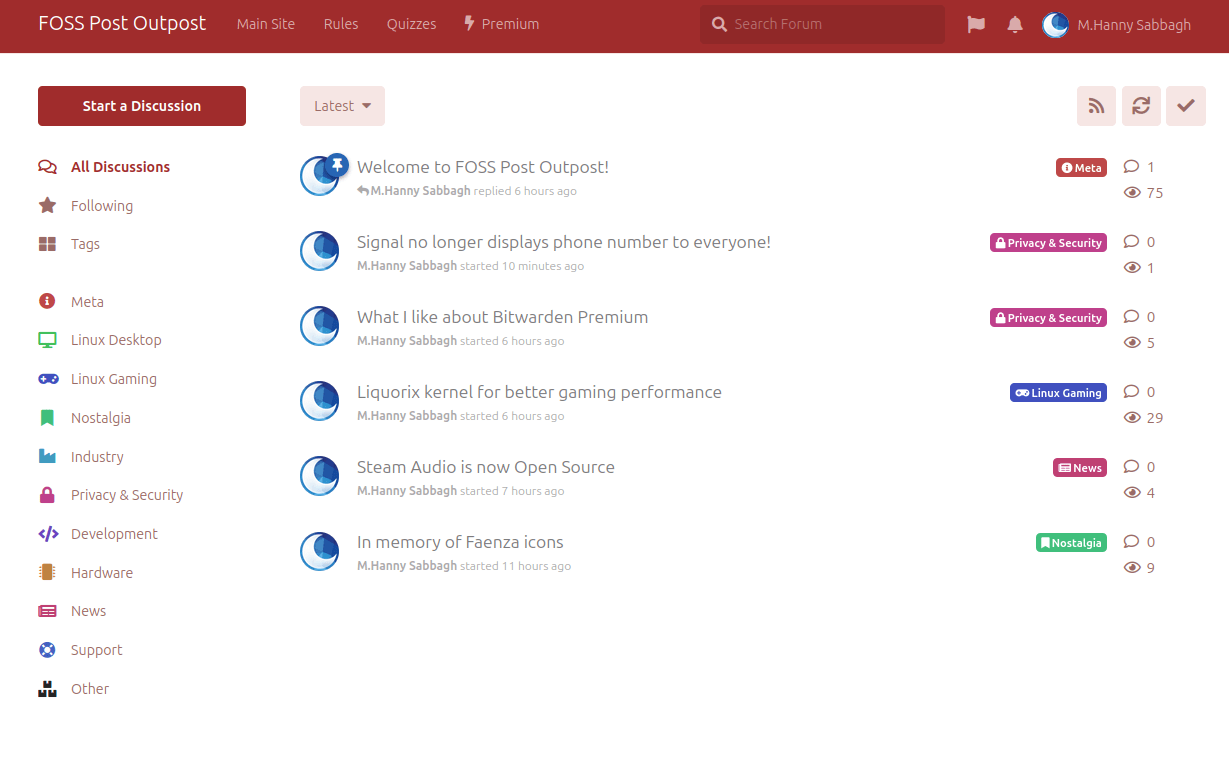Slax is a minimal Linux distribution that works from USB. It is based on Debian and aims to be as much as modular and portable as possible. Slax has been around for more than a decade and half.
We published a review for it few months ago, but we wanted to hear more about it and its past. So we’ve contacted its creator, Tomas Matejicek, and asked him kindly to answer a couple of questions about Slax. Below is the full interview.
Let’s start talking about your reasons for initializing the Slax project. Why Slax?
I was always in a need of some bootable operating system, which could be started on a broken computer or server to restore and backup data. I also wanted to impress my friends with a fully functional Linux desktop started from a removable media, which they can try without installing. But carrying full-sized CD was not much convenient, and floppy drives didn’t provide sufficient space. So my goal was to make a full featured Linux system, but small enough so it could fit those small 200MB mini CDs.
But since I was a beginner with Linux as well myself, I didn’t know much options to start with. All the distributions I tried at that time (Mandrake, Fedora) were too big, I didn’t know how to install minimalistic versions of them. Slackware provided very clever installer, which allowed me to select individual packages to install, so I started using Slackware as my base.
Back when you started the project, were there any similar projects to Slax, and have you thought about joining them?
Slax started in 2002 under the name Slackware-Live. I didn’t know about any other similar projects at that time, though I am sure some existed already. I think Knoppix was already famous at that time, but it was way too big already.
The older versions of Slax were based on Slackware, but before you switched to Debian there was a period of around 5 years where you weren’t active in development. Was it burn-out as an open source developer that caused this disconnection, or just personal issues maybe?
I do not remember exactly, but it is fairly possible that I was not in a need of a bootable Linux anymore at certain periods in my life, and that could affect my interest in releasing new Slax versions in general. :–)
For the older versions of Slax there was a website where you could customize Slax online and download your image on the fly. What happened to this service and do you think of getting it back?
Since Slax was based initially on Slackware, there was no official repository for Slackware packages. Usually, users had to compile most of other software by hand, which was not convenient. I tried to improve the situation by allowing Slax users to share their compiled packages with others by uploading them to central repository. Then, users could download either individual packages one by one, or they could kinda “add them to cart” and then download customized ISO file which included all the selected software.
But since Slax is based on Debian now, I see no need for that anymore. Users can simply use ‘apt’ command to install any software they like, and ‘savechanges’ command to make a permanent module with all the customizations.
Let’s talk about some technical aspects of the latest versions of Slax. Why Chromium but not Firefox? Why Xterm but not any other GNOME/KDE/MATE/XFCE terminal emulator? Why Fluxbox and not, maybe, LXDE or XFCE?

Older Slax versions had KDE and many other applications, but all the full featured desktop environments are now so big and complicated, it makes no sense to me to include them in base Slax, which should be as small as possible. Users can always install more if they like. Chromium is just my personal preference, since I use it myself. I have nothing against Firefox :–)
Why is there no install option in Slax (to hard disk)?
I always tried to encourage Slax’ users to install the full thing. If you liked Slax based on Slackware, you should install Slackware to disk. If you like Slax based on Debian now, you should install Debian, not Slax.
Following your work, you seem to be in love with “small things”, judging by the 1MB PXE install and the 270MB ISO image. What do you think is your biggest motive to focus on small sizes, despite that in today’s world, most users can afford 1GB things?
Small-sized applications are usually much faster than the bigger ones. Size does not matter so much to me, but speed does. It is always more convenient to download 270 MB instead of 4GB. Furthermore, Slax should be considered as a minimal base for further customization. It is much easier to add more things than to remove existing ones.
Let’s talk about open source finances. Have you been able to support yourself as an open source developer from the donations / Patreon / products you sell to go full time in developing Slax?
Back in the early days, I was using Google Adsense (website advertising) to drive finances to Slax development. It could make as much as 400 USD per month, which was incredible for me at that time, being an university student.
The income I collect from Slax nowadays is enough to keep me interested in releasing new versions from time to time, but it could in no way provide sufficient coverage for my lifestyle spendings.
Would you advise other developers to go in developing open source projects like you? In other words, was it worth it?
I am 100% sure the experience is worth it. You learn so much.
In the end, what would you like to say to those who love Slax and use your work?
I make Slax primarily for me. But I am very happy that other people find it interesting or useful too! I am really grateful for all the feedback I receive. If you like Slax as it is now, you do not need to do anything more.
If you, however, wish to see Slax grow and improve, there is a Patreon project created with several milestones set up, and you can contribute financially on a regular basis to make new cool things happen. See you there! :–)
Hanny is a computer science & engineering graduate with a master degree, and an open source software developer. He has created a lot of open source programs over the years, and maintains separate online platforms for promoting open source in his local communities.
Hanny is the founder of FOSS Post.


